The world of wireless connectivity is undergoing a radical transformation thanks to the emergence of DePIN. By leveraging blockchain technology and decentralized principles, DePIN wireless networks are revolutionizing how we access and utilize wireless coverage. This article delves into the exciting realm of DePIN wireless networks, exploring their underlying technology, real-world applications, and the potential they hold for a more connected and accessible future.
Table of Contents
Overview about DePIN
What is DePIN?
Decentralized Physical Infrastructure Networks, or DePINs, are revolutionizing how we build and manage infrastructure. By incentivizing collaboration through cryptocurrencies, DePINs foster a more efficient and distributed system for developing and maintaining essential infrastructure.
Unlike traditional models reliant on centralized control, DePINs utilize blockchain technology to establish peer-to-peer networks. This empowers individuals to contribute their own resources and actively participate in the decision-making process for the entire network.
How DePIN works?
DePIN fundamentally works by connecting physical devices in the real world, which collect and exchange data. This massive amount of data fuels the creation of innovative decentralized applications (dApps), driving the growth of the DePIN network. The key components of the DePIN ecosystem are:
- Physical infrastructure network: This includes physical assets like vehicles for transportation, solar panels for energy production, hotspots for wireless internet, and servers for cloud services.
- Off-chain computing infrastructure: This acts as a bridge between the physical world and the blockchain, utilizing intermediaries like oracles to facilitate communication.
- Blockchain architecture: This is the foundation of DePIN, where each network interacts through a blockchain system with built-in smart contract logic. The blockchain serves as both a record-keeping system and the center of the token economy.
- Token incentives: This is a core aspect of DePIN's model, where service providers are rewarded with network tokens. This incentivizes participation and contributes to the expansion of the network.
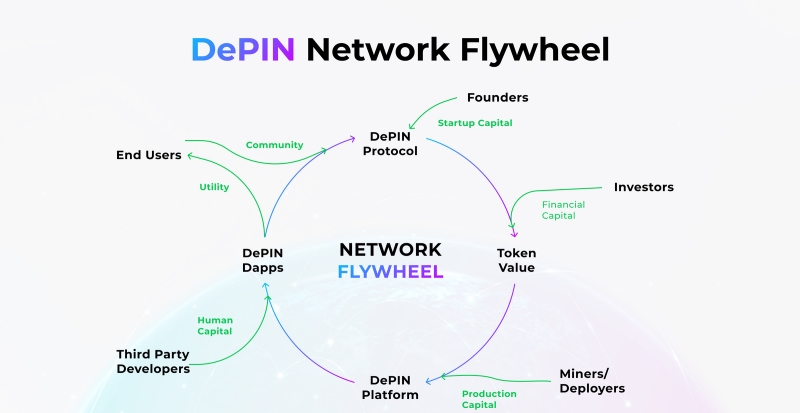
DePIN by Sector
DePIN networks are diverse and essential to the ecosystem, spanning several key categories:
- Cloud and Storage Networks: These provide services like file storage, databases, content delivery networks (CDNs), and virtual private networks (VPNs).
- Wireless Networks: This category includes cutting-edge technologies like 5G and LoRaWAN, essential for the Internet of Things (IoT) and machine-to-machine communication.
- Sensor Networks: Interconnected devices with embedded sensors collect real-time data from the physical world, playing a crucial role in applications like geographical mapping.
- Energy Networks: These integrate decentralized energy sources, driving the development of a more efficient and resilient power grid.
Each network type is a vital component of the DePIN landscape, collectively contributing to a more decentralized and interconnected digital world.
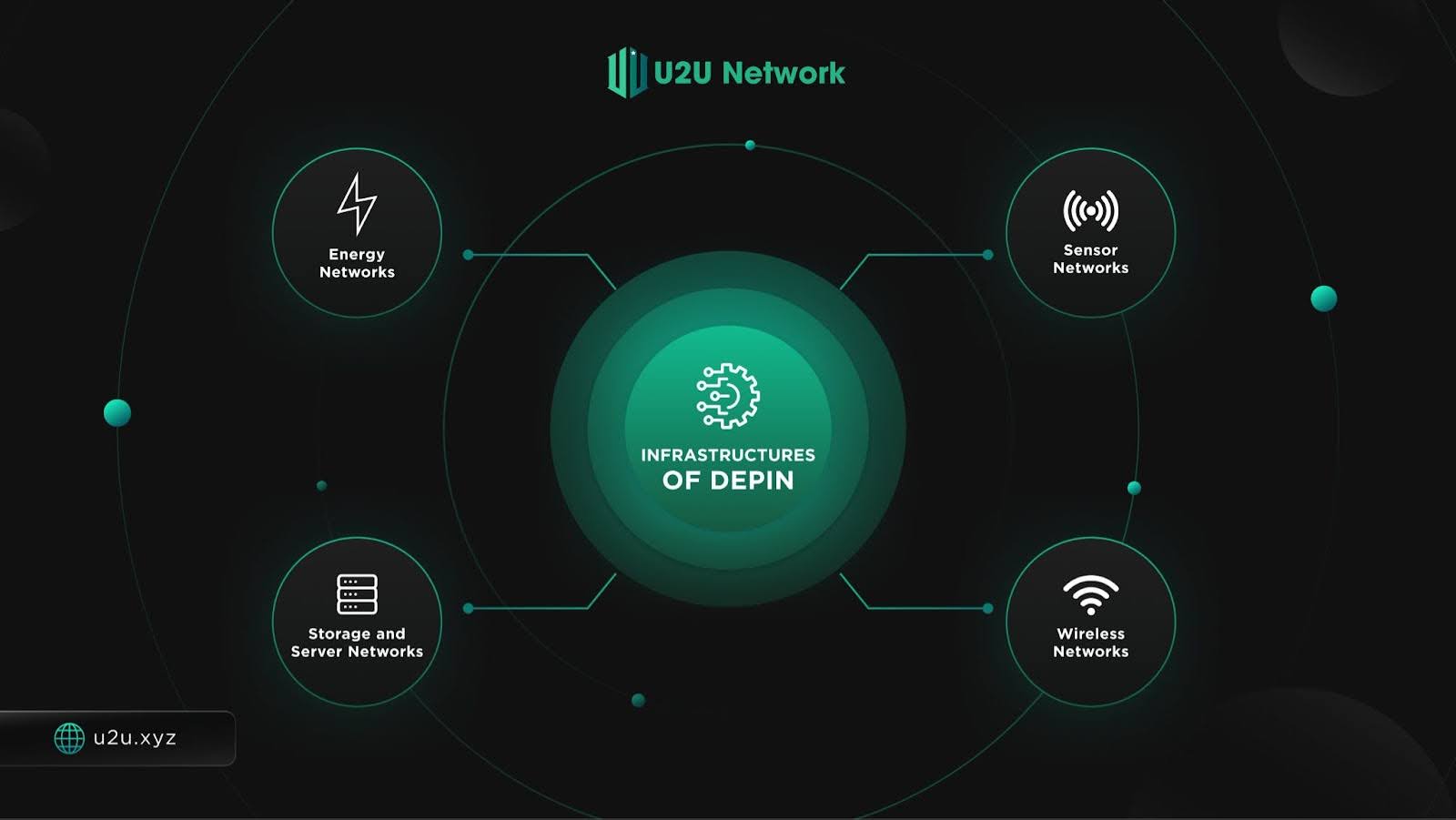
Understanding Wireless Networks
Decentralized wireless (DeWi) networks leverage cryptographic incentives to deploy various networks like 5G, WiFi, LoRaWAN, and Bluetooth.
Building wireless infrastructure requires significant capital, leading to dominance by large telecommunication companies with the necessary resources. This has resulted in a traditionally concentrated industry with few key players.
DeWi networks present a different model, enabling multiple independent entities or individuals to collaborate and deploy wireless infrastructure using cryptographic incentives.
There are four primary types of decentralized wireless networks (DeWi) in use today:
- Cellular 5G: Offers high download speeds and minimal delay.
- WiFi: Provides network connectivity to a specific area.
- LoRaWAN: Commonly used for communication in the Internet of Things (IoT).
- Bluetooth: Enables data transmission over short distances.
DeWi networks typically start by using tokens to encourage operators to invest in and set up the necessary hardware. These token rewards offer financial support and a modest return on investment, motivating operators to continue even if the network isn't yet making enough money from users.
As the network expands and benefits from economies of scale, a combination of reduced costs and wider coverage should attract more users, generating more revenue for operators. The ultimate objective is to create a self-sustaining network where user fees cover operating expenses and investments needed for growth.

Case study of Wireless Networks
Helium is a decentralized wireless network that provides global coverage for both LoRaWAN-enabled IoT devices and cellular devices. Introduced in 2019, its Helium Hotspot initially revolutionized wireless access for IoT devices. Expanding on this success, Helium now offers 5G coverage as well.
- Helium IoT Network A decentralized network leveraging the LoRaWAN protocol, Helium IoT Network connects a wide range of "Internet of Things" devices. Applications include vehicle diagnostics, environmental monitoring, energy consumption tracking, and more.
- Helium 5G Network Helium 5G Network is a revolutionary approach to mobile connectivity, combining the power of large-scale operators with the flexibility of thousands of user-operated nodes. This hybrid model anticipates the growing demand for faster speeds and lower latency, while addressing the challenges of denser networks and rising site acquisition costs. By eliminating these costs and rewarding operators with MOBILE tokens, Helium 5G empowers users to become active participants in building a high-bandwidth future.
With the introduction of Helium Mobile's affordable unlimited plan and the popularity of the Solana Saga smartphone (which includes a free trial of Helium Mobile), the Helium Network has experienced significant growth in recent months, with a surge in new hotspot installations.
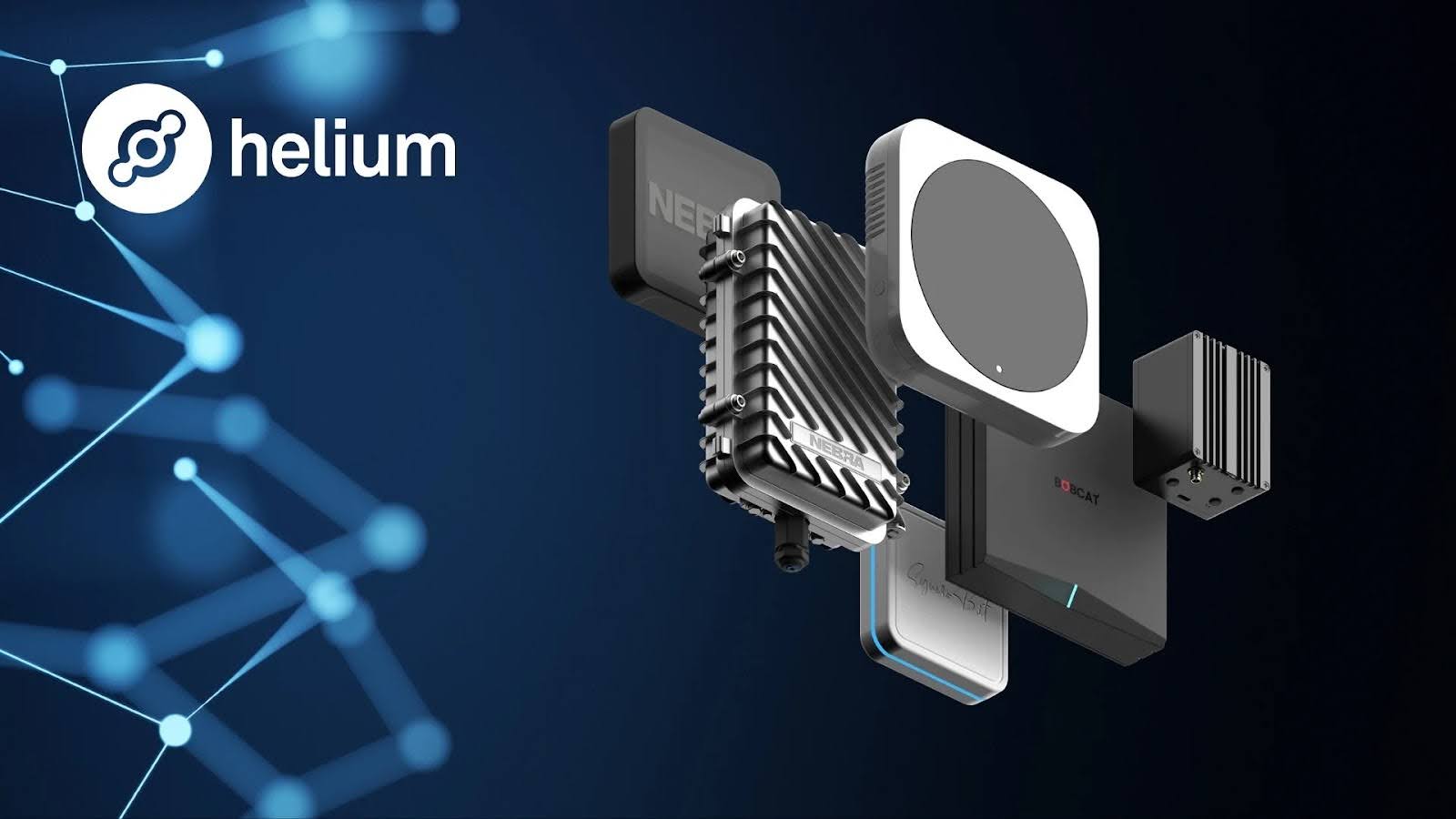
Helium's network operates using several tokens:
HNT: The primary token of the Helium network. It's essential for using the network because it's converted into "Data Credits," which are used for transferring data. Hotspot hosts can also exchange other network tokens (IOT, MOBILE) for HNT.
IOT: This token belongs to the Helium IoT network and is earned by LoRaWAN Hotspots through data transfers and Proof of Coverage activities.
MOBILE: This token is associated with the Helium 5G network and is rewarded to those who provide 5G coverage and verify the Helium Network.
Data Credits (DC): The exclusive form of payment for transmitting data on the Helium Network, priced at US$0.00001. For instance, on the IoT network, 1 DC is used for each 24-byte data packet. More data transfer leads to more Data Credits being used, which in turn earns the subnetwork (e.g., IoT Network) more HNT tokens, thus incentivizing activity.
These tokens serve as utility tokens for various services within the network and motivate operators to maintain the infrastructure. Since its inception, Helium has expanded to over 970,000 hotspots, providing decentralized coverage to numerous IoT and mobile devices.
Some DePIN Wireless Networks Projects
World Mobile
World Mobile is transforming global connectivity by providing affordable, high-quality internet access to underserved communities. Founded by Micky Watkins in 2018, the platform utilizes blockchain technology, renewable energy, and a sharing economy model to revolutionize the way people connect.
World Mobile operates as a decentralized network, empowering users to actively participate in its growth and earn World Mobile Tokens (WMT) as rewards. By leveraging existing infrastructure and innovative technologies, such as "TV white space" for data transmission, the platform ensures efficient and cost-effective connectivity solutions.
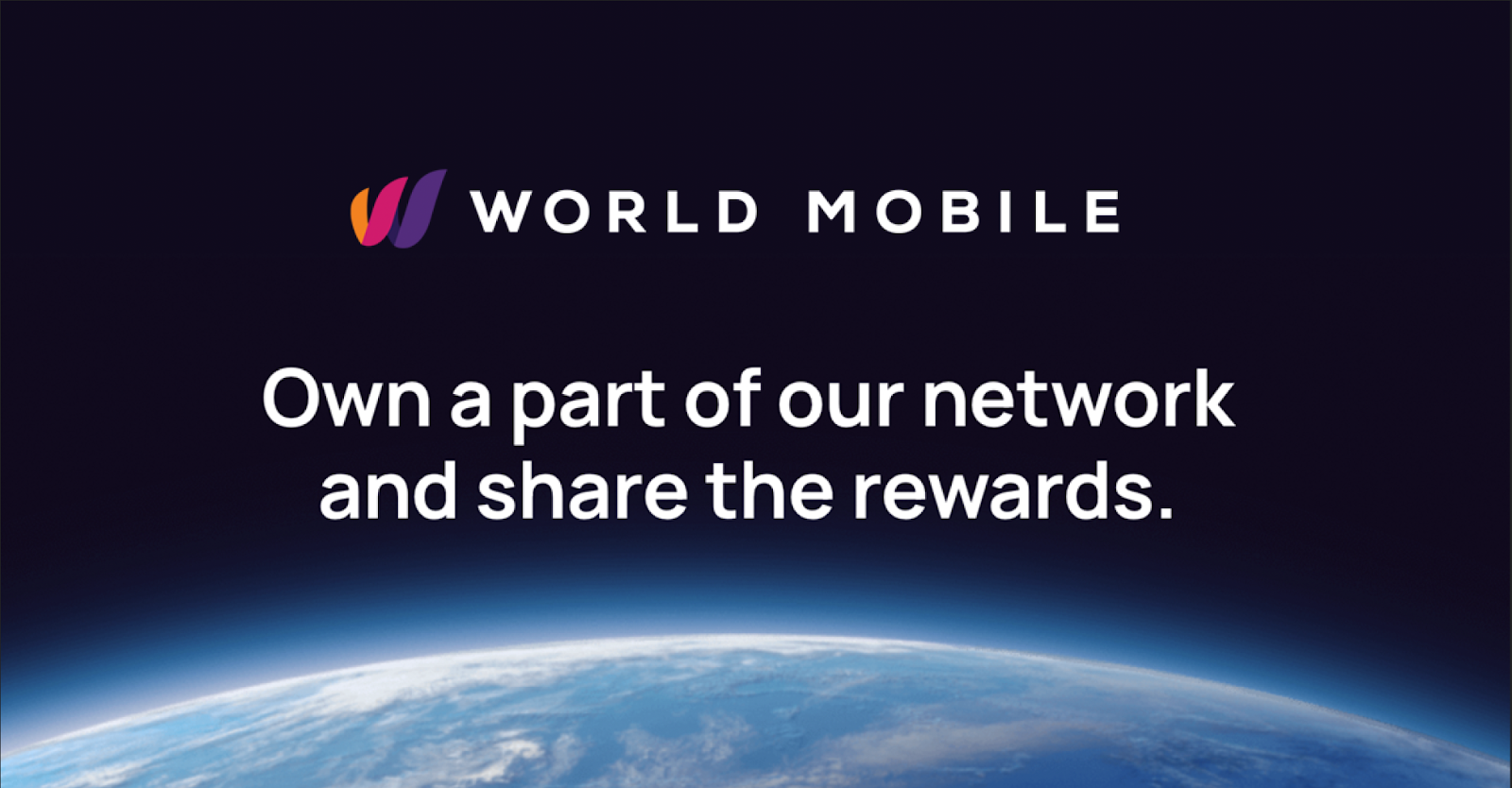
WiFi Map
WiFi Map is a platform that provides access to over 150 million Wi-Fi hotspots worldwide. The platform leverages crowdsourcing, with users contributing by adding Wi-Fi networks and running speed tests. They earn points for these contributions, which can be redeemed for benefits like VPN access and offline maps.
Chirp
Chirp DePIN is redefining telecommunications with its revolutionary decentralized network, catering to IoT, mobile, and broadband needs. Supporting 14 communication protocols, Chirp boasts unparalleled device connectivity, bolstered by blockchain technology for security and AI for intelligent management. This holistic ecosystem enhances connectivity, security, and user control. By harnessing both licensed and unlicensed spectrums, Chirp DePIN is forging a path toward a globally accessible and interconnected future in telecom.
Central to Chirp's success are the passionate Chirp Keepers, who actively contribute to expanding the network's reach. These individuals host and install long-range antennas, ensuring seamless connectivity for all users. In recognition of their valuable contribution, Keepers are rewarded with $CHIRP, Chirp's native token.
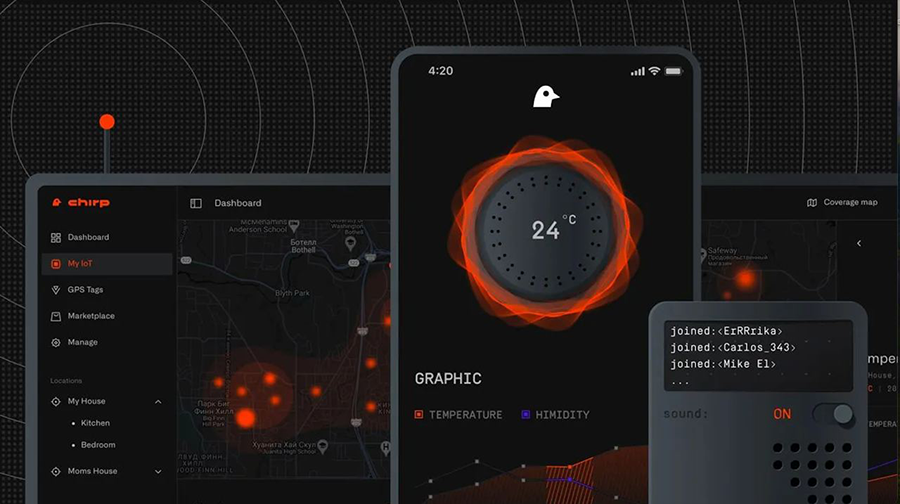
Karrier One
Karrier One is a groundbreaking decentralized wireless (DeWi) initiative that leverages blockchain technology to transform the telecommunications industry. It aims to build the world's first community-owned 5G network, offering enhanced accessibility, speed, affordability, and security. This innovative network will provide services to both other carriers and individual users, utilizing a combination of licensed and unlicensed spectrum.
Nodle
Nodle Network is a decentralized wireless network that provides a global, user-friendly communication platform for IoT devices. It operates through Nodle Edge Nodes, utilizes the Nodle Chain, and employs the NODL token. The network empowers users to monetize their hardware and IoT devices by sharing their communication resources, thus expanding network connectivity. These participants form a collaborative "Citizen Network," receiving incentives for network growth through a Proof of Connectivity™ algorithm, which considers factors like the number of base stations, network bandwidth, and geographic coverage.
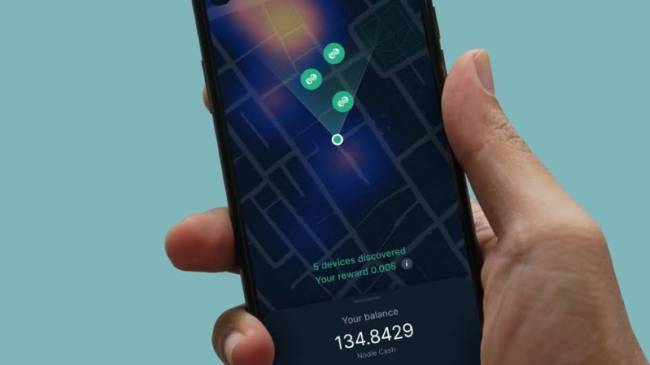
DePIN wireless networks represent a paradigm shift in wireless coverage, empowering individuals and communities to participate in building and maintaining their own networks. With their decentralized nature, enhanced security, and potential for wider accessibility, DePIN wireless networks hold immense promise for transforming various industries and connecting the unconnected. For further insights into the latest developments and innovations in the DePIN landscape, be sure to visit the U2U Network website, a valuable resource for staying informed about this rapidly evolving field.





.png)
